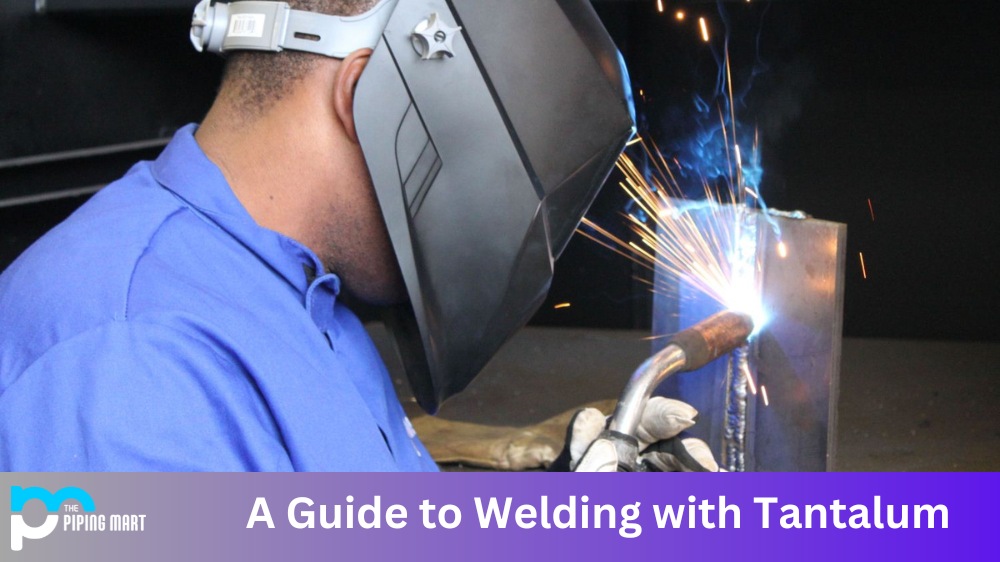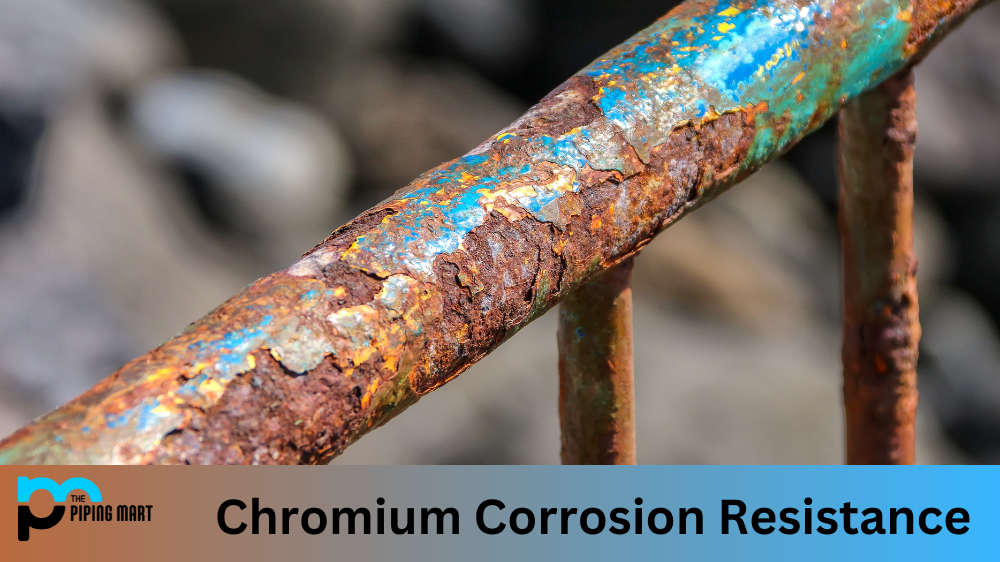Tantalum is a rare metal that offers superior hardness and corrosion resistance when used in welding applications. It is often found in medical equipment, electronics components, aerospace components, and nuclear reactors. Welding with tantalum is not for the faint of heart; it requires specialized tools and skills. Let’s take a look at the tantalum welding procedure.
What is Tantalum?
Tantalum is a chemical element with the symbol Ta and atomic number 73. It is a rare transition metal that is highly corrosion-resistant. Tantalum is used in various applications, including electronic components, surgical implants, and aircraft engines.
Properties of Tantalum
Tantalum has a number of properties that make it ideal for welding, including a high melting point, high density, and low thermal conductivity. Tantalum also has a very low coefficient of expansion, which means it maintains its shape and size at high temperatures.
Types of Welding Processes
There are a variety of welding processes that can be used to join tantalum, including gas tungsten arc welding (GTAW), plasma arc welding (PAW), and electron beam welding (EBW). Each process has advantages and disadvantages, so selecting the right process for the application is important.
Tantalum Welding Procedures
The first step in the tantalum welding procedure is to make sure you have the right tools for the job. You will need a TIG welder reaching temperatures up to 5400°F (3000°C). You will also need tungsten electrodes that are rated for use with tantalum. In addition, you may want to use an inert gas shield to keep oxygen out of your weld zone—this helps prevent oxidation and contamination of your weld joint. Finally, if necessary, you will also need appropriate safety gear such as eye protection, gloves, and respiratory protection.
Once you have all of your materials ready, it’s time to start welding! The key here is to maintain a steady arc length throughout your weld joint to achieve an even weld bead without any gaps or irregularities. This requires practice and skill but can be mastered with enough patience and effort. As you work on your weld joint, check it periodically for any defects or irregularities that could cause problems down the line.
Another important aspect of the tantalum welding procedure is heat management. This means controlling the heat input into your weld joint, so it does not overheat or become brittle due to excessive thermal stress. To do this, you must adjust your current settings accordingly depending on the thickness of your material and its alloy composition. This information should be available from your supplier if necessary. Additionally, try using short arc lengths to precisely control heat input during welding operations.
Prepare the Materials
Before beginning any welding procedure, it is important to gather all of the necessary materials. For welding tantalum, you will need a power source, an electrode, and a filler material. You will also need personal protective equipment, including a welding helmet, gloves, and a long-sleeved shirt.
Clean the Work Area
It is also important to clean the work area before beginning any welding procedure. This will help to ensure that the weld is of the highest quality possible. Any dirt or debris on the surface of the material can cause problems during the welding process.
Set Up the Power Source
Once all of the materials have been gathered, you can begin setting up the power source. For welding tantalum, it is important to use a DC power source with reverse polarity. The electrode should be connected to the positive terminal of the power source, while the filler material should be connected to the negative terminal.
Begin Welding
Once everything is set up, you can begin welding. To weld tantalum, it is important to use a short arc length and a low travel speed. It is also important to maintain a steady grip on the electrode and filler material.
Finish Welding
When you have finished welding, it is important to remove any excess material from the work area. This can be done with a chipping hammer or a wire brush. Once all of the excess material has been removed, you can inspect the weld for any defects.
Inspect the Weld
After you have finished welding and removing any excess material, it is important to inspect the weld for any defects. This includes checking for cracks, porosity, or other irregularities in the weld itself. If any defects are found, they should be repaired before proceeding with any further steps
Tips for Welding with Tantalum
When welding with tantalum, it is important to use an inert gas shield to protect the weld area from oxygen and other contaminants. It is also important to use a lower current than you would with other metals, as this will help to prevent the melting of the base metal. It is also important to use a filler metal with a lower melting point than tantalum, such as tungsten or thorium.
Troubleshooting Welding Problems
If you have difficulty welding with tantalum, you can try a few things to troubleshoot the problem. First, ensure you are using the correct welding process for the application. If you are still having difficulty, try increasing the current or using a different filler metal. If you still have problems, please consult a qualified welding professional.
Advantages of Tantalum Welding
The main advantage of tantalum welding is its ability to join metals that are otherwise difficult or impossible to fuse together. Because tantalum has higher melting points than most metals, it can be used for joining materials that cannot be joined using conventional methods such as arc and resistance welding. It also creates welds that are stronger and more reliable than other types of welds due to their unique chemical and physical properties. Additionally, this type of weld can be completed quickly without requiring extensive preparation or clean-up time afterward.
Disadvantages Of Tantalum Welding
The primary disadvantage associated with tantalum welding is that it can only be used on certain types of metals; it cannot be used on alloys or cast iron components without risking damage to the materials being joined. Additionally, it requires specialized training to use the equipment safely and correctly; if not done properly, there’s a risk of causing serious harm or damage to people or property around the area where the work is being done. Finally, because tantalum is an expensive metal, this type of welding can be quite costly as compared to other kinds of fusion processes, such as arc and resistance welding.
Conclusion:
Welding with tantalum can be intimidating at first, but it doesn’t have to be! With the right tools and techniques—and lots of practice—welders can master this challenging material. By following these steps outlined above—acquiring the right tools, maintaining a steady arc length throughout each weld joint, checking for defects regularly while welding, and managing heat input appropriately—you’ll be well on your way towards becoming a successful tantalum welder! Good luck!

Pipingmart is B2B portal specializes in industrial, metal and piping products. Also, share latest information and news related to products, materials and different types grades to help business dealing in this industry.




